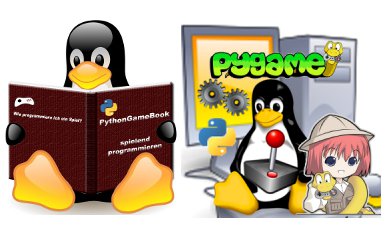

First off, a little more about the project. Last Escape was ambitious from the outset. Before the project began, we decided that we were going to work with C++ instead of Flash or JavaScript. This decision was of a practical nature; the two coders who had committed the largest amount of time to the project ahead of time (myself and FLARE creator Clint Bellanger) were the most comfortable with game development on C++.
The art in Last Escape is a combination of digital painting and pixel art. This effect is a bit jarring, but given the 48-hour time constraint, we had to make full use of all the artistic talent that was available to us. By and large, the vast majority of the art in the game is brand new, although we used existing assets where we could.
The basic premise behind Last Escape is that you're a person who has made a forced landing on an alien world due to your space ship being out of energy. The object of the game is to collect enough energy to power your ship, and, in the process, you run into some interesting alien ruins as well as some giant insects.
We started out by planning certain things beforehand. Since we didn't know what the prompt would be, we were somewhat limited in the planning we were able to do, but we did create a rough road map and timeline in advance to give us some indication of where we should aim. You can see these on the OGA forums. While we eventually fell a bit behind schedule on certain milestones, these documents were absolutely essential to keeping everyone motivated and on track, and I would not recommend undertaking a team based game design project without them, no matter how small.
When the contest theme was announced (it turned out to be "Energy"), we got the group together and immediately started brainstorming. I set the time limit on brainstorming for game ideas to 45 minutes, and we created a google document and began typing up a list of ideas as they came up. I attempted to steer the ideas in various directions to get a wide variety of suggestions, because I noticed that the discussion tended to get hung up on whatever game genre we were talking about at the time. We had to deliberately move things from puzzles to action to strategy, etc, and this is one place where I put on my "leader" hat in order to make that happen.
Following the brainstorming session, we put things to a vote. We went through a two-step voting process -- the first step was to ask for an approval vote, and just have everyone list all the ideas they liked. We used this to narrow the choices down to five. After that, we had a second vote and everyone picked their favorite. As an aside, it's interesting to note that in the craziness of brainstorming, I accidentally copied an idea from the main #opengameart IRC channel into the list, and that was the idea that was chosen. We discovered later on that the person who's idea we used was submitting their own entry into the game jam, so we ended up with two games that had a very similar premise. Fortunately, Xiphias3 (the originator of the idea) was cool with this, and said that we didn't have to mention it. We did anyway. :)
After the voting was finished, we put together a brief todo list and started frantically coding and doing art. This is where the real learning kicked in, and, knowing what I know now, there are some things I would probably handle differently.
First off, probably the biggest issue I ran into personally were merge conflicts. We hosted our project on GitHub and gave a number of people commit access. This was all well and good, but we were poorly organized (IRC can be a double-edged sword, since at any given time you have no way of knowing who is paying attention). Consequently, there were several situations where more than one person ended up working independently on the same feature or bugfix. I personally spent at least five hours cleaning up merge problems brought about by pieces of perfectly reasonable code interacting in unexpected ways.
As such, I would strongly advise anyone working on a large, rapid team project such as this one to have a web-based task tracking program ready to go at the outset. Google Docs proved inadequate for this.
Another related thing that I learned is that when you're managing a team of 20 people, the director doesn't really have time to code. This made things difficult for me, because I had already budgeted most of my time for coding, but as the project lead, people looked to me to know what was going on. On a large team, people generally need to be broken into smaller groups and given tasks; as such, you need someone whose job it is to know exactly who is doing what at any given time, and that's one area where I would make an effort to improve on if I were to ever undertake something like this again. Real task tracking software -- something simple with a quick and easy learning curve -- would have been very helpful for this.
One place where I would consider myself fairly successful is keeping a large group of people with differing interests and talents moving and motivated through a stressful project. Here's the advice I would give to anyone needing to do this:
- First off, have a leader. You need someone with veto power in order to keep things moving in a good direction.
- As the leader, understand that it's not "your" project -- it's everyone's. This means that it's not your job to tell people what the direction of the project is; rather, your job is to facilitate the team finding a direction and keep things from getting sidetracked.
- Democracy rules. The main direction of your project is often best decided on by brainstorming and then a vote. This gives everyone a chance to make their case and have their idea judged by the entire team, and not just the leader.
- Large groups of people can tend to get sidetracked very easily in discussions. As such, it is very important that you limit discussion time in advance and make sure that you designate a time by which brainstorming is over, and a time shortly thereafter when you have to reach a final decision. If you don't set up these times in advance, people who are trying to make their case may assume that you want to silence them. Plus, it's not particularly fair to people if they're not aware when their time to speak is going to be over. To avoid putting yourself in the position of even appearing partial, it's best to set time limits in advance.
- If possible, keep votes in the open. When I took a vote, I asked everyone to send me a private message with their vote (because it was easiest to keep track of), but also vote publicly, and then verify my count.
- Remember, your project depends on your team. People will come and go, as is natural with any project, but people will be a lot more likely to leave if they feel that their input has no chance of being heard. This is to some extent reiterating what was said above, but I cannot stress enough that leading is about facilitating and not ruling with an iron fist!
- Where possible, be tool-agnostic. Not everyone is comfortable in the same software. Some people may prefer to use closed-source tools, and it's important to accommodate these folks if you want to keep your dev team happy.
- You should not be format-agnostic. You need to decide in advance what formats are acceptable for your media files. Stick to well implemented open standards, and make sure people understand that they are responsible for providing their files in these formats. This means that media editors that can't output to these formats are essentially out, unless the people using them have a quick and clean way of converting both to and from their proprietary formats. The rest of the team should not be burdened with these conversions.
- Version control is an absolute must. As much as I complained about merge conflicts, things are a lot worse if you're sharing a code base without version control. I recommend using a system with web-based tools that as many people as possible are comfortable with. Most coders prefer Git, and by and large GitHub turned out to be a good choice for us (with one major caveat that I'll get into below).
- Tiled (the Qt-based FOSS tile map editor) was absolutely excellent for putting tile maps together quickly. I strongly recommend it to any project considering making a 2D tile-based game.
- Try to avoid reinventing the wheel when possible when writing your code. You may have specific requirements that no existing game engine meets, but there are plenty of frameworks you can build your engine on that provide things like easy, cross-platform graphics, sound, and I/O. We used SFML to great effect, but there are plenty of other good choices.
While it may not be possible to avoid these sorts of issues completely, I would strongly recommend setting up your team with version control before you start coding.
Another issue we ran into with Git is that it tried to merge Tiled's XML map files. It did surprisingly well at this in most cases, but machine-generated XML isn't always the best thing for code merges, since it often needs to be in a very specific format. I'm guessing there's some way of turning this off for certain filetypes and forcing the merge to be resolved manually, as you would with a binary file.
Finally, some thoughts on coding. On one hand, you're trying to develop code quickly. On the other hand, you need to make your code easy to expand. Generally, you have two types of people -- the ones who want to code as quickly as possible due to the time limit, and the ones who want to code as cleanly as possible, time limits be damned. You need to be prepared to listen to both these sorts of people. Sometimes going off half-cocked can end up wasting a lot of your precious hours because you end up having to replace code or work around nasty hacks. On the other hand, when someone wants to take a while to do something the "right" way, you need to take stock of how long it will actually take them to finish what they're trying to do. If they can't do it within the allotted time, there's not much of a point, and they may as well have been working on something else.
What's important is that you be practical and strike a balance between the two. Your code needs to be at least somewhat maintainable and readable, or else you'll run into roadblocks long before your time is up.
So there you have it. No doubt some other folks from Team OGA will read this -- if you do, please chime in in the comments, and I'll try to work your thoughts into this post. As always, if anyone has any comments or questions, please feel free to post them. I tend to reply to almost everything. :)
A final, encouraging note: Last Escape has taken on a life of its own, and the project is continuing. You can follow our work (and download the latest version) on GitHub, although for the moment you'll need to compile it yourself. Here's the link:
https://github.com/lendrick/Last-Escape
Bart K.
OpenGameArt.org


































